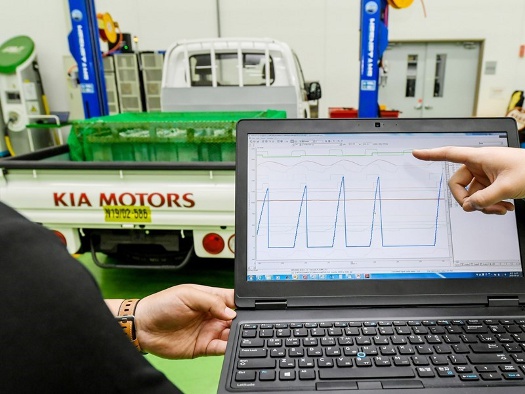 |
| June 04, 2019 | Volume 15 Issue 21 |
Designfax weekly eMagazine
Archives
Partners
Manufacturing Center
Product Spotlight
Modern Applications News
Metalworking Ideas For
Today's Job Shops
Tooling and Production
Strategies for large
metalworking plants
New Hyundai tech estimates weight of light-duty commercial EVs while driving to improve efficiency

New technology enables electric vehicles (EVs) to accurately estimate range and modify torque output based on gross vehicle weight.
Hyundai Motor Group recently unveiled a new system that estimates the gross vehicle weight of a light-duty commercial electric vehicle and optimizes performance accordingly.
The development of the system is a first-ever for the industry, using acceleration sensors to optimize the vehicle's settings based on a current gross weight estimate. The technology is being considered by Hyundai Motor Group for use on future light-duty electric commercial vehicles.
The ability to calculate the gross weight of a vehicle on the move means that an electric vehicle's torque output can be optimized to maximize estimated remaining range. Hyundai developers say this reduces potential wheel spin (reducing traction) when a vehicle is carrying less payload, increasing commercial efficiency. The new technology also allows for changes in torque output based on topography, altering the amount of torque needed to propel a vehicle uphill based on its gross weight and allowing small business owners to effectively reduce unnecessary vehicle-related costs.
Hyundai developed the gross weight estimation technology by utilizing acceleration sensors instead of weight sensors to keep the costs competitive. Developing the technology this way means that it can be applied to a vehicle not equipped with a costly air suspension system.
Using acceleration sensors, gross weight is estimated through Newton's law of acceleration. In short, the less mass and more energy put on matter, the faster speed it moves. So, when pushing an object at a constant speed, the weight of the object can be calculated depending on its acceleration rate.
Through this process, the vehicle estimates the distance it can drive and adjusts its maximum torque output. Specifically, the potential vehicle range estimate is based on the accurate measurement of the current weight and speed of the vehicle, enhancing efficiency for commercial use.
For example, when the vehicle is carrying a heavy load, the vehicle automatically informs the driver of the estimated drive range to secure sufficient battery life to reach the destination safely.
Source: Hyundai Motor Group
Published June 2019
Rate this article
View our terms of use and privacy policy
